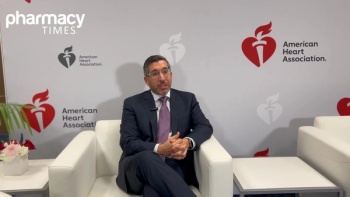
HIV and Tuberculosis Co-infection: Treat Early
Tuberculosis (TB) and HIV are 2 of the deadliest diseases worldwide, with TB recently reaching the top of the list in 2014.
Tuberculosis (TB) and HIV are 2 of the deadliest diseases worldwide, with TB recently reaching the top of the list in 2014. HIV increases the risk of contracting TB, whereas TB slows CD4 count recovery and hastens HIV progression to AIDS. Approximately 1/3 of the 1.5 million people who died of TB in 2014 were also infected with HIV.
Researchers at the Johns Hopkins University School of Medicine published a clinical review of HIV-related TB in the February 2017 issue of Microbiology Spectrum. They compiled current evidence and summarized recommendations for disease diagnosis, prevention, and treatment.
Clinicians should screen all newly diagnosed HIV patients for TB. They should screen again when the patient’s CD4 counts fall below 200 cells/mm3 or after a new TB exposure. Tuberculin skin tests (TSTs) are recommended over interferon gamma release assays (IGRAs) for patients likely to require repeated testing.
An induration ≥5 mm in an individual with HIV warrants further testing for active TB. If extrapulmonary TB is suspected, clinicians should obtain a sputum and smear, culture, and order nucleic acid amplification tests.
Antiretroviral therapy (ART) and latent TB infection (LTBI) treatment are 2 effective prophylactic measures to prevent progression to active TB in HIV patients. These measures are useful even in patients with high CD4 counts. Traditional LTBI treatment involves 9 months of isoniazid therapy.
A few differences separate treatment of active TB in the presence or absence of HIV. Patients with HIV who also have active TB must receive daily therapy rather than alternative intermittent dosing regimens. Clinicians must also consider drug interactions between rifampin and certain antiretrovirals, such as raltegravir or ritonavir.
To decrease TB-related death among patients with HIV, the authors recommend using proper prevention and treatment techniques in practice. To control the growth of the disease, providers must also make an effort to extend resources to impoverished populations with little access to care.
Reference
Tornheim JA, Dooley KE. Tuberculosis Associated with HIV Infection. Microbiol Spectr. 2017 Jan;5(1); doi: 10.1128/microbiolspec.TNMI7-0028-2016.
Newsletter
Stay informed on drug updates, treatment guidelines, and pharmacy practice trends—subscribe to Pharmacy Times for weekly clinical insights.















































































































































































































